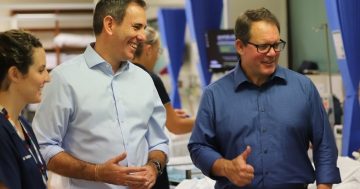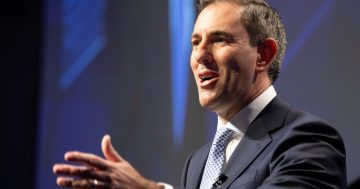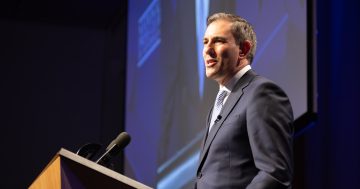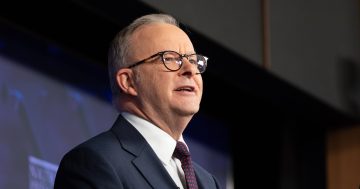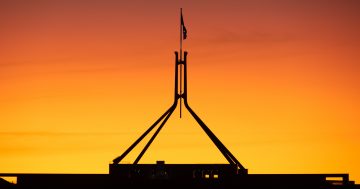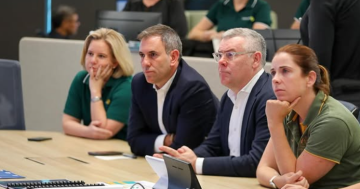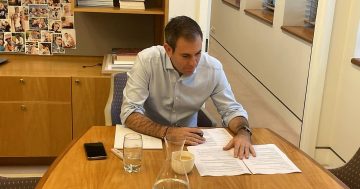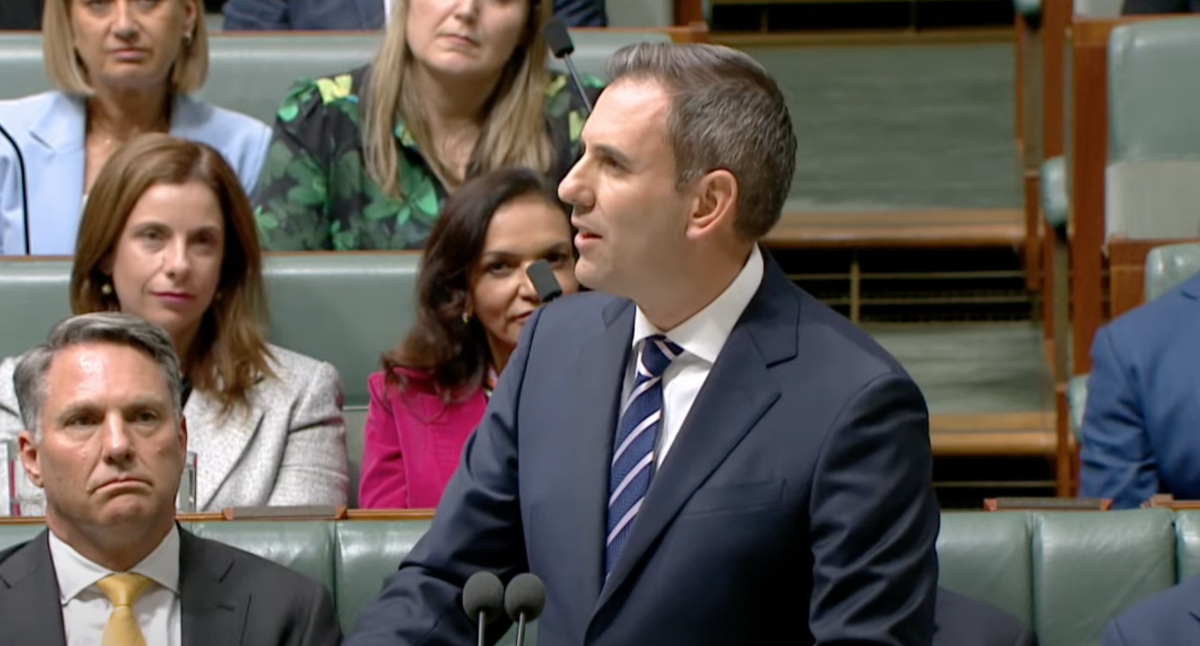
Jim Chalmers delivered the 2023-24 Budget last night: there’s a surplus but not for long. Photo: Screenshot.
Treasurer Jim Chalmers has forecast the first budget surplus in 15 years and Labor’s first since Paul Keating’s in 1989.
However, the slender $4.2 billion surplus announced in the Federal Budget will be short-lived, with economic pressures expected to quickly plunge the nation back into the red over the forward estimates.
“The global economy is slowing due to persistent inflation, higher interest rates and financial sector strains,” the Treasurer said Tuesday night while delivering his second budget.
“Outside of the pandemic and the global financial crisis, the next two years are expected to be the weakest for global growth in over two decades.
“This will affect us here in Australia.
“Our economic growth is expected to slow from 3.25 per cent in 2022–23 to 1.5 per cent the year after before recovering to 2.25 per cent in the next.
“Despite this, our economy will continue to create jobs and unemployment is expected to remain low by historical standards – 4.25 per cent in 2023–24, and 4.5 the year after.
“In this environment, inflation remains our primary economic challenge.”
The centrepiece of the budget is a $14.6 billion cost-of-living package with targeted relief for welfare payments, power bills and affordable housing.
And, as first reported by Region this week, the size of the Australian Public Service will grow by more than 10,000 to help deliver more programs in-house and accelerate the transition from the overuse of external contractors and consultants.
Finance and Public Service Minister Katy Gallagher said the government was making the necessary investments in the 2023-24 Budget to continue rebuilding the service.
“This is an important investment in our public and democratic institutions and also our community,” Senator Gallagher said.
The budget allocates $10.9 million to establish an in-house consulting function, $8.4 million to build the capability of the APS to address service-wide challenges; and $3.4 million to support the government’s commitment to achieve 5 per cent First Nations employment by 2030.
An investment of $2 billion is going towards modernising the government’s ICT systems to deliver simpler, more secure and connected digital services.
For cost-of-living relief, an investment of $3.5 billion will triple the bulk billing incentive for the most common GP consultations for children under 16 and Commonwealth concession card holders.
The cost of medicines will be reduced by up to half for at least six million Australians, with some patients able to receive two months’ worth of medicines per visit to their pharmacy instead of the current one.
The budget promises up to $3 billion of electricity bill relief in combination with the states and territories.
A total of $4.9 billion is directed to increasing the base rate of JobSeeker Payment and Youth Allowance by $40 per fortnight for eligible recipients, including extending eligibility for the existing higher rate of the JobSeeker Payment to single Australians aged 55 to 59 years who have been on the payment for nine or more continuous months.
Rent assistance will be increased by 15 per cent, and the Single Parenting Payment will be expanded to parents who are principal carers whose youngest child is under 14 years of age – up from eight years old.
“People are under the pump. We’ve carefully calibrated and designed this budget so that it takes pressure off the cost of living rather than adding to it,” Dr Chalmers said.
“This budget prioritises responsible, targeted cost of living relief while also investing in the future, securing the services Australians rely on and strengthening the nation’s finances.”
Shadow treasurer Angus Taylor said a “drover’s dog” could have handed down this budget, which only delivers a fleeting surplus.














